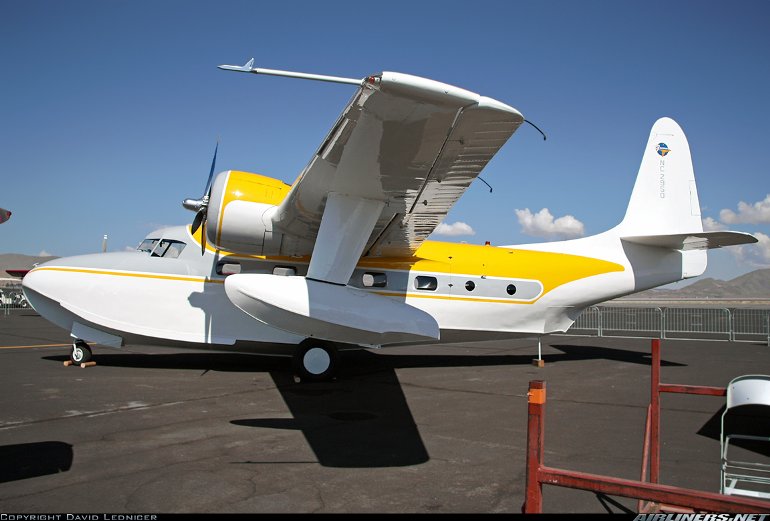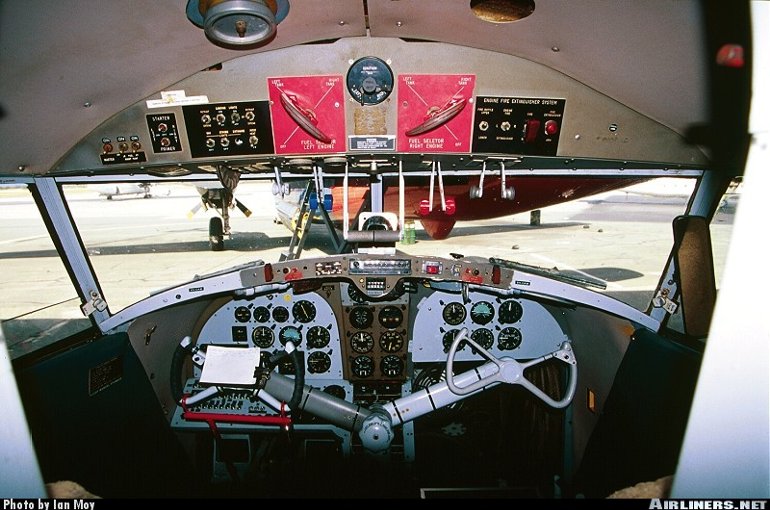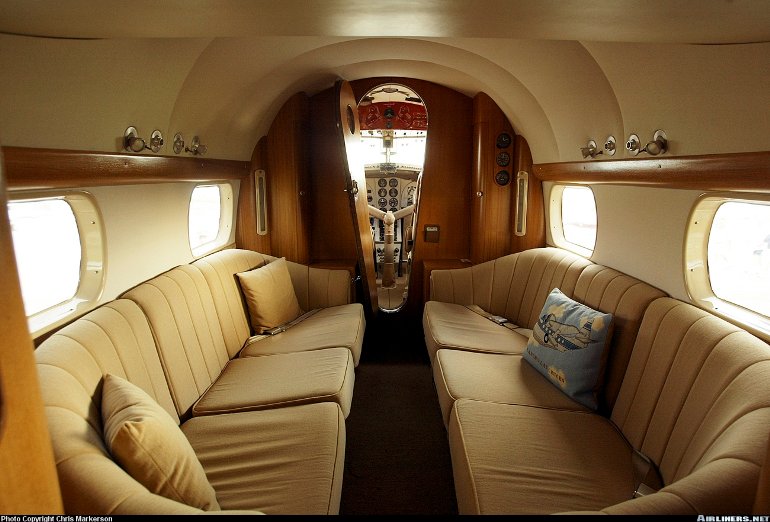Aircraft Technical Data
Grumman G-73 Mallard



| Details | |
| Country of Origin | United States of America |
| Type | Ten seat utility amphibious transport |
| History | Following in the footsteps of the smaller Goose and Widgeon before it, Grumman developed the G-73 Mallard amphibian for commercial use. Developed in the immediate postwar years, the Mallard is of similar overall configuration to Grumman's earlier amphibious designs in that it features twin radial engines on a high mounted wing with under wing floats, retractable undercarriage and an unswept tail unit. Unlike the earlier aircraft the Mallard features tricycle undercarriage, a stressed skin two step hull and fuel can be carried in the wingtip tanks. The Mallard prototype first flew on April 30 1946, and the type entered service shortly afterwards in September that year with a Canadian operator. The Mallard was designed for regional airline operations with two pilots and 10 passengers, but most of the 59 delivered were for corporate use. Today only a small number remain in use, but their unique amphibious capability means they remain popular, particularly with tourist operators. Like the earlier and smaller Goose, the Mallard has been fitted with Pratt & Whitney Canada PT6A turboprops. Frakes Aviation in the USA reengined a small number of Mallards as G-73Ts in the early 1970s, the PT6s substantially boosting performance and operating economy. The first Frakes conversion first flew in 1969 and an FAA supplemental type certificate was awarded in October 1970. In early 1994 a plan emerged which would see the Mallard reenter production in the Czech Republic. Aero and Levov of the Czech Republic, and Duncan Aviation of the USA hoped to raise the necessary capital to restart the line in the late 1990s. These plans later lapsed. |
| Powerplants | G-73 - Two 450kW (600hp) Pratt & Whitney R1340S3H1 Wasp nine cylinder piston radial engines driving three blade constant speed propellers. G-73T - Two 530kW (715shp) Pratt & Whitney Canada PT6A27 or PT6A-34 turboprops |
| Performance | G-73 - Max speed 346km/h (187kt), cruising speed 290km/h (157kt). Initial rate of climb 1290ft/min. Service ceiling 23,000ft. Range with max fuel 2220km (1655nm). G-73T - Max cruising speed 354km/h (191kt), economical cruising speed 346km/h (187kt). Initial rate of climb 1350ft/min. Service ceiling 24,500ft. Range with max fuel and no reserves 2595km (1400nm), with max payload and no reserves 1388km (750nm). |
| Weights | G-73 - Empty 4240kg (9350lb), max takeoff 5783kg (12,750lb). G-73T - Empty equipped 3970kg (8750lb), max takeoff 6350kg (14,000lb). |
| Dimensions | G-73/G-73T - Wing span 20.32m (66ft 8in), length 14.73m (48ft 4in), height on undercarriage 5.72m (18ft 9in). Wing area 41.3m2 (444sq ft). |
| Capacity | Crew of two. Main cabin seating for up to 10 passengers. Many aircraft used as executive transports with customised interiors. |
| Production | 59 Mallards built between 1946 and 1951. Small numbers later converted to turboprop power. |
| Related Links | Grumman G-73 Mallard |
The backbone of this section is from the The International Directory of Civil Aircraft by Gerard Frawley and used with permission. To get your own copy of the book click here |
|








